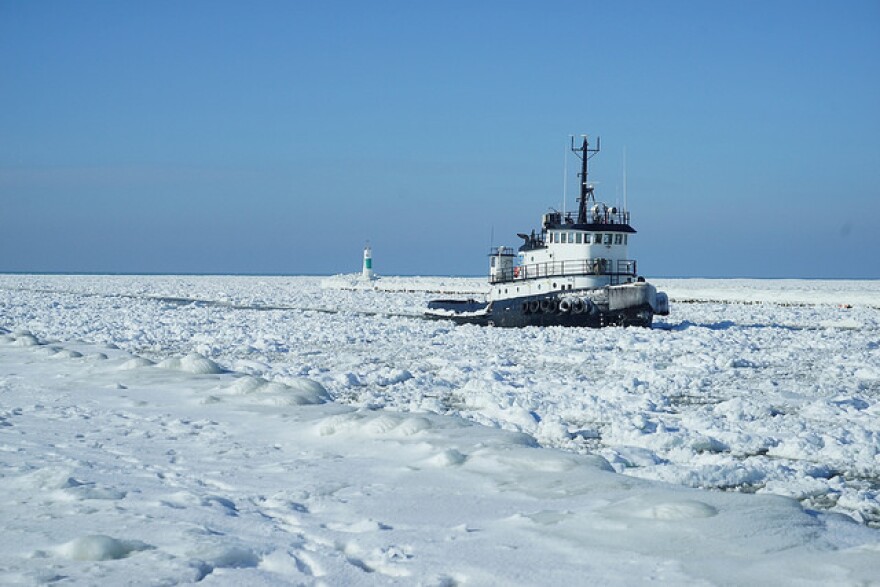Researchers at the University of Michigan are working on a project to monitor ice coverage on the Great Lakes. Officials said this may reduce the number of ships that get trapped in ice.
An ice forecasting system is the goal. The information will one day be readily available for shipping vessels and the U.S. Coast Guard.
During the warmer seasons, weather organizations use buoys to collect information on lake conditions. The buoys are pulled in the winter limiting information on conditions once the ice hits.
Tom Rayburn is with the Lake Carriers Association. He said the lack of information makes navigating the Great Lakes more difficult.
“Once we get into that ice season we are relying heavily on overflights. We are relying on vessel members talking to each other about what they are seeing in that location. If there is not a vessel in front or if there are dramatic changes over night which the wind and the temperature can definitely drive. We aren’t going to know what is happening until we are right on top of it.”
Rayburn said the U.S. Coast Guard is also taking part in the research. He said this new project will help mariners plot courses and anticipate ice while on the Great Lakes.

